Description
Azopt Eye Drops – Brinzolamide, 5ml
What AZOPT Eye Drops is and what it is used for?
Azopt Eye Drops active ingredient, brinzolamide, belongs to a group of medicines called carbonic anhydrase inhibitors. It reduces pressure within the eye.
AZOPT eye drops are used to treat high pressure in the eye. This pressure can lead to an illness called glaucoma.
If the pressure in the eye is too high, it can damage your sight.
What is Glaucoma?
Glaucoma is a common eye condition where the optic nerve, which connects the eye to the brain, becomes damaged.
It’s usually caused by fluid building up in the front part of the eye, which increases pressure inside the eye.
Your eye contains a clear, watery liquid that feeds the inside of the eye. Liquid is constantly being drained out of the eye and new liquid is made to replace this. If the liquid cannot drain out quickly enough, the pressure inside the eye builds up. This medicine works by increasing the amount of liquid that is drained. This reduces the pressure inside the eye. If the high pressure is not reduced, it could lead to a disease called glaucoma and eventually damage your sight.
Glaucoma can lead to loss of vision if it’s not diagnosed and treated early.
It can affect people of all ages, but is most common in adults in their 70s and 80s.
Glaucoma does not usually cause any symptoms to begin with.
It tends to develop slowly over many years and affects the edges of your vision (peripheral vision) first.
For this reason, many people do not realise they have glaucoma, and it’s often only picked up during a routine eye test.
If you do notice any symptoms, they might include blurred vision, or seeing rainbow-coloured circles around bright lights.
Both eyes are usually affected, although it may be worse in 1 eye.
Very occasionally, glaucoma can develop suddenly and cause:
- intense eye pain
- nausea and vomiting
- a red eye
- a headache
- tenderness around the eyes
- seeing rings around lights
- blurred vision
Visit an opticians or a GP if you have any concerns about your vision.
If you have glaucoma, early diagnosis and treatment can help stop your vision getting worse.
Without treatment, glaucoma can eventually lead to blindness.
If you develop symptoms of glaucoma suddenly, go to your nearest eye casualty unit or A&E as soon as possible.
This is a medical emergency that may require immediate treatment.
There are several different types of glaucoma.
The most common is called primary open angle glaucoma. This tends to develop slowly over many years.
It’s caused by the drainage channels in the eye becoming gradually clogged over time.
Other types of glaucoma include:
- acute angle closure glaucoma – an uncommon type caused by the drainage in the eye becoming suddenly blocked, which can raise the pressure inside the eye very quickly
- secondary glaucoma – caused by an underlying eye condition, such as inflammation of the eye (uveitis)
- childhood glaucoma (congenital glaucoma) – a rare type that occurs in very young children, caused by an abnormality of the eye
Glaucoma can occur for a number of reasons.
Most cases are caused by a build-up of pressure in the eye when fluid is unable to drain properly.
This increase in pressure then damages the nerve that connects the eye to the brain (optic nerve).
It’s often unclear why this happens, although certain things can increase the risk, including:
- your age – glaucoma becomes more common as you get older
- your ethnicity – people of African, Caribbean or Asian origin are at a higher risk
- your family history – you’re more likely to develop glaucoma if you have a parent or sibling with the condition
- other medical conditions – such as short-sightedness, long-sightedness and diabetes
It’s not clear whether you can do anything to prevent glaucoma, but having regular eye tests should pick it up as early as possible.
The treatment recommended for you will depend on the type of glaucoma you have, but the options are:
- eyedrops – to reduce the pressure in your eyes
- laser treatment – to open up the blocked drainage tubes or reduce the production of fluid in your eyes
- surgery – to improve the drainage of fluid
You’ll also probably need regular appointments to monitor your condition and check the treatment is working.
Further Information on Glaucoma
Azopt Eye Drops Reviews
After using Azopt Eye Drops, it\’s helpful to let others know about your experience. Reviews of an item help other users know that medicines received have helped the condition it is claimed for, how well the treatment worked or any issues to be aware of. We invite our users to leave a review of both their treatment and of the service provided. Click on the reviews tab to see if there has been feedback on this item.
What is the price of Azopt Eye Drops in Nigeria?
The price of Azopt Eye Drops is N6500
Where can you buy Azopt Eye Drops In Nigeria?
You can Buy Azopt Eye Drops at Asset Pharmacy Lagos Nigeria, Nigeria\’s Largest Online Pharmacy.
Azopt Eye Drops is a prescription drug that legally requires a medical prescription to be dispensed.
To order this product you confirm that you are under the care of your doctor or consultant and have been given permission by them for purchase, fulfillment & use in treatment with their written consent.
You will be required to send Asset Pharmacy your prescription
How to Use
How to use AZOPT
Always use this medicine exactly as your doctor or pharmacist has told you. Check with your doctor or
pharmacist if you are not sure.
Only use AZOPT for your eyes. Do not swallow or inject.
The recommended dose is
1 drop in the affected eye or eyes twice a day – morning and night.
Use this much unless your doctor told you to do something different. Only use AZOPT in both eyes if your doctor told you to. Take it for as long as your doctor told you to.
Get the AZOPT bottle and a mirror
Wash your hands
Shake the bottle and twist off the cap. After the cap is removed, if the tamper evident snap collar is loose, remove before using product.
Hold the bottle, pointing down, between your thumb and middle finger
Tilt your head back. Pull down your eyelid with a clean finger, until there is a ‘pocket’ between the eyelid and your eye. The drop will go in here
Bring the bottle tip close to the eye. Use the mirror if it helps
Do not touch your eye or eyelid, surrounding areas or other surfaces with the dropper. It could infect the drops
Gently press on the base of the bottle to release one drop of AZOPT at a time.
Do not squeeze the bottle: it is designed so that a gentle press on the bottom is all that it needs
After using AZOPT, press a finger to the corner of your eye, by the nose (picture 3) for at least 1 minute. This helps to stop AZOPT getting into the rest of the body.
If you take drops in both eyes, repeat the steps for your other eye.
Put the bottle cap back on firmly immediately after use
Use up one bottle before opening the next bottle.
If a drop misses your eye, try again. If you are using other eye drops, leave at least 5 minutes between putting in AZOPT and the other drops. Eye ointments should be administered last.
If you use more AZOPT than you should
If you get too much in your eyes, rinse it all out with warm water. Do not put in any more drops until it’s time for your next regular dose.
If you forget to use AZOPT
Use a single drop as soon as you remember, and then go back to your regular routine. Do not use a double dose to make up for a forgotten dose.
If you stop using AZOPT
If you stop using AZOPT without speaking to your doctor, the pressure in your eye will not be controlled which could lead to loss of sight.
Product Details
Product Information of Azopt eye drops
What you need to know before you use AZOPT
Do not use AZOPT
– if you have severe kidney problems.
– if you are allergic to brinzolamide or any of the other ingredients of this medicine (listed in
– if you are allergic to medicines called sulphonamides. Examples include medicines used to treat diabetes and infections and also diuretics (water tablets). AZOPT may cause the same allergy.
– if you have too much acidity in your blood (a condition called hyperchloraemic acidosis). If you have further questions, ask your doctor for advice.
Warnings and precautions
Talk to your doctor or pharmacist before using AZOPT:
– if you have kidney or liver problems.
– if you have dry eyes or cornea problems.
– if you are taking other sulphonamide medicines
– if you have a specific form of glaucoma in which the pressure inside the eye rises due to
deposits that block fluid draining out (pseudoexfoliative glaucoma or pigmentary glaucoma) or a
specific form of glaucoma in which the pressure inside the eye (sometimes rapidly) rises
because the eye bulges forward and blocks fluid draining out (narrow-angle glaucoma)
Children and adolescents
AZOPT is not to be used by infants, children or adolescents under 18 years of age unless advised by your doctor.
Other medicines and AZOPT
Tell your doctor or pharmacist if you are taking, have recently taken or might take any other
medicines, including medicines obtained without a prescription.
If you are taking another carbonic anhydrase inhibitor (acetazolamide or dorzolamide, see
section 1 What AZOPT is and what it is used for), talk to your doctor.
Pregnancy and breast-feeding
If you are pregnant or breast-feeding, think you may be pregnant or are planning to have a baby, ask your doctor or pharmacist for advice before using this medicine.
Women who may become pregnant are advised to use effective contraception during AZOPT
treatment. The use of AZOPT is not recommended during pregnancy or breast-feeding. Do not use AZOPT unless clearly indicated by your doctor.
Ask your doctor or pharmacist for advice before taking any medicine.
Driving and using machines
Do not drive or use machines until your vision is clear. You may find that your vision is blurred for a time just after using AZOPT.
AZOPT may impair the ability to perform tasks requiring mental alertness and/or physical
coordination. If affected, take care when driving or using machines.
AZOPT contains benzalkonium chloride
This medicine contains 3.35 µg benzalkonium chloride per drop (= 1 dose) which is equivalent to
0.01% or 0.1 mg/ml.
AZOPT contains a preservative (benzalkonium chloride) which may be absorbed by soft contact lenses and may change the colour of the contact lenses. You should remove contact lenses before using this medicine and put them back 15 minutes afterwards. Benzalkonium chloride may also cause eye irritation, especially if you have dry eyes or disorders of the cornea (the clear layer at the front of the eye). If you feel abnormal eye sensation, stinging or pain in the eye after using this medicine, talk to your doctor.
Side Effects
Side Effects of Azopt
Like all medicines, this medicine can cause side effects, although not everyone gets them.
The following side effects have been seen with AZOPT.
Common side effects (may affect up to 1 in 10 people)
– Effects in the eye: blurred vision, eye irritation, eye pain, eye discharge, itchy eye, dry eye, abnormal eye sensation, redness of the eye.
– General side effects: bad taste.
Uncommon side effects (may affect up to 1 in 100 people)
– Effects in the eye: sensitivity to light, inflammation or infection of the conjunctiva, eye swelling, eyelid itching, redness or swelling, deposits in eye, glare, burning sensation, growth on surface of eye, increased pigmentation of the eye, tired eyes, eyelid crusting, or increased tear production.
– General side effects: decreased or reduced heart function, a forceful heartbeat that may be rapid or irregular, decreased heart rate, difficulty breathing, shortness of breath, cough, decreased red
blood cell count in blood, increased chlorine level in blood, dizziness, difficulty with memory, depression, nervousness, decreased emotional interest, nightmare, generalized weakness,
fatigue, feeling abnormal, pain, movement problems, decreased sex drive, male sexual difficulty, cold symptoms, chest congestion, sinus infection, throat irritation, throat pain,
abnormal or decreased sensation in mouth, inflammation of the lining of the oesophagus, abdominal pain, nausea, vomiting, upset stomach, frequent bowel movements, diarrhoea,
intestinal gas, digestive disorder, kidney pain, muscle pain, muscle spasms, back pain, nose bleeds, runny nose, stuffy nose, sneezing, rash, abnormal skin sensation, itching, smooth skin
rash or redness covered by elevated bumps, skin tightness, headache, dry mouth, debris in eye.
Rare side effects
(may affect up to 1 in 1,000 people)
– Effects in the eye: corneal swelling, double or reduced vision, abnormal vision, flashes of light in the field of vision, decreased eye sensation, swelling around the eye, increased pressure in
eye, damage to the optic nerve.
– General side effects: memory impairment, drowsiness, chest pain, upper respiratory tract congestion, sinus congestion, nasal congestion, dry nose, ringing in ears, hair loss, generalized
itching, feeling jittery, irritability, irregular heart rate, body weakness, difficulty sleeping, wheezing, itchy skin rash.
Not known (frequency cannot be estimated from the available data):
– Effects in the eye: eyelid abnormality, visual disturbance, corneal disorder, eye allergy, decreased growth or number of eyelashes, eyelid redness.
– General side effects: increased allergic symptoms, decreased sensation, tremor, loss or decrease in taste, decreased blood pressure, increased blood pressure, increased heart rate, joint pain,
asthma, pain in extremity, skin redness, inflammation, or itching, abnormal liver blood tests, swelling of the extremities, frequent urination, decreased appetite, feeling unwell.
Reporting of side effects
If you get any side effects, talk to your doctor or pharmacist. This includes any possible side effects not listed in this leaflet. You can also report side effects directly via the national reporting system (see details below). By reporting side effects you can help provide more information on the safety of this
medicine.
How to store AZOPT
Keep this medicine out of the sight and reach of children.
Do not use this medicine after the expiry date which is stated on the bottle and box after “EXP”. The
expiry date refers to the last day of the month.
This medicine does not require any special storage conditions.
You must throw away a bottle four weeks after you first opened it, to prevent infections. Write
down the date you opened each bottle in the space below and in the space on the bottle label and box.
For a pack containing a single bottle, write only one date
Ingredients
Product Ingredients of Azopt
What AZOPT contains
– The active substance is brinzolamide. Each millilitre contains 10 mg of brinzolamide.
– The other ingredients are benzalkonium chloride, carbomer 974P, edetate disodium, mannitol
(E421), purified water, sodium chloride, tyloxapol. Tiny amounts of hydrochloric acid or sodium hydroxide are added to keep acidity levels (pH levels) normal.
How to store
How to store Azopt
Keep this medicine out of the sight and reach of children.
Do not use this medicine after the expiry date which is stated on the bottle and box after “EXP”. The
expiry date refers to the last day of the month.
This medicine does not require any special storage conditions.
You must throw away a bottle four weeks after you first opened it, to prevent infections. Write
down the date you opened each bottle in the space below and in the space on the bottle label and box.
For a pack containing a single bottle, write only one date
Prescription Product
This product requires a prescription from your Doctor.
Please follow the instruction received from the pharmacy on how to forward your prescription to the pharmacy after you have paid for the medicine.
A prescription drug is a pharmaceutical medication that legally requires a medical prescription to be dispensed.
To order this product you confirm that you are under the care of your doctor or consultant and have been given permission by them for purchase, fulfillment & use in treatment with their written consent
Delivery
Delievry time are estimates. Can vary due to the time of day you order.
Delivery time estimate are subject to the courier company.
Shipping to Lagos cost starts from N1850 Next day delivery
Shipping to Rest Of Nigeria – 2-3 days cost starts from N2000
Shipping to Rest of Africa – 5-7 working days Cost starts from N12000
Shipping to Europe 7 – 14 working days Cost srats from N18000
Shipping to Rest of the world – 7 – 14 days Cost starts from N18000

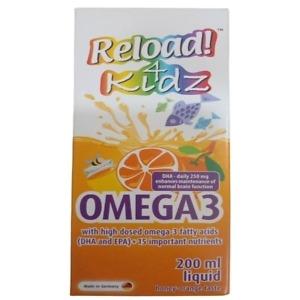




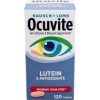
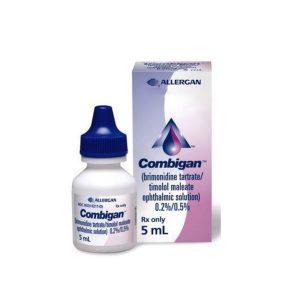

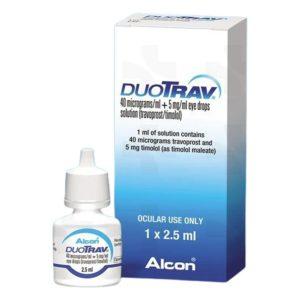
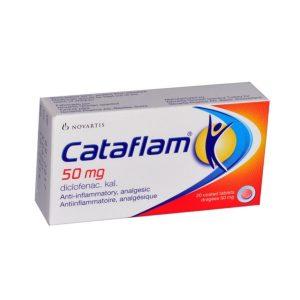

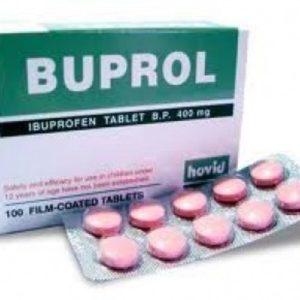
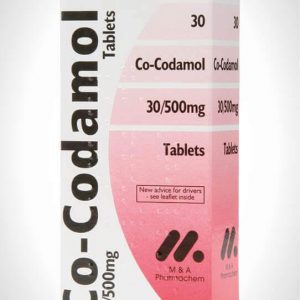
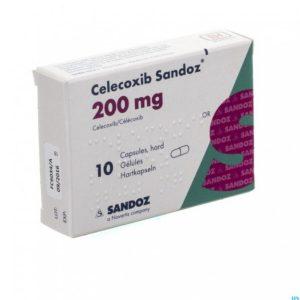
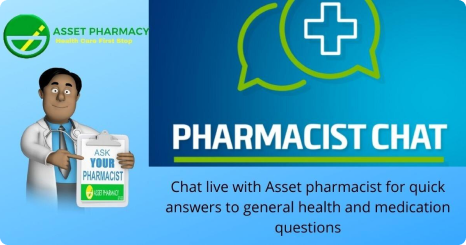


Reviews
There are no reviews yet.